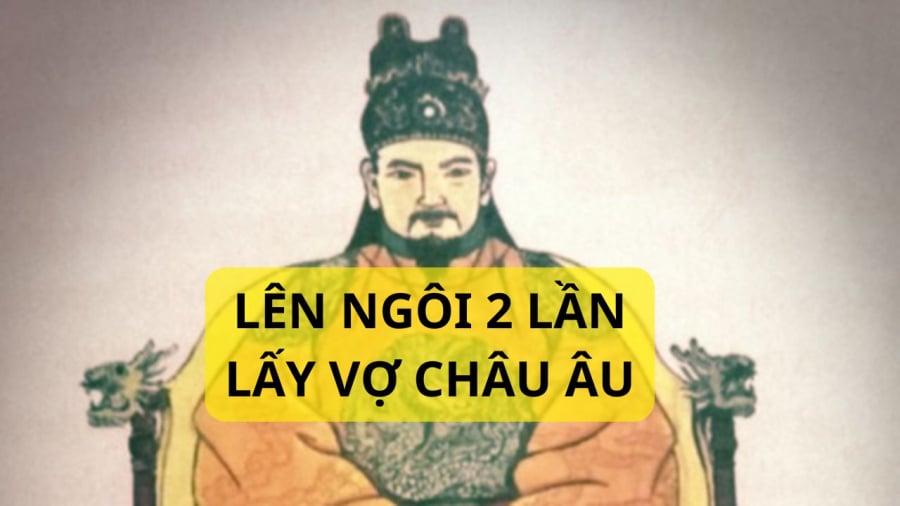In the annals of Vietnamese feudal history, a unique monarch stands out: Lê Duy Kỳ, known as Emperor Lê Thần Tông, who ascended the throne not once but twice — a rare occurrence in any monarchy. Born on November 19, 1607, to the Lê Trung Hưng dynasty, he first became emperor at the tender age of 12 in 1619.
During his initial 24-year reign (1619–1643), Lê Thần Tông was known for his open-mindedness, willingness to listen to his court, and concern for his people. In 1643, he abdicated in favor of his son, Lê Duy Hựu, who took the throne as Emperor Lê Chân Tông. However, tragedy struck when Lê Chân Tông suddenly passed away after only six years on the throne.

With his other sons still too young to rule, Lê Thần Tông was compelled to reassume the throne in 1649, ruling for another 13 years until his death in 1662. This marked the beginning of a string of tragic early deaths in the imperial family.
Upon Lê Thần Tông’s demise, his second son, Lê Duy Vũ, succeeded him as Emperor Lê Huyền Tông. However, the young emperor’s reign was cut short after just nine years due to a grave illness. The throne then passed to another of Lê Thần Tông’s sons, Lê Duy Hợi, who took the name Emperor Lê Gia Tông. Unfortunately, this reign, too, was brief, lasting only four years due to illness.
Finally, the youngest son, Lê Duy Hợp, ascended the throne as Emperor Lê Hy Tông and ruled for a more extended period of 30 years, bringing some solace to the beleaguered imperial family. Interestingly, all four of Lê Thần Tông’s sons became emperors, but three of them died at a young age, leaving a legacy of sorrow and unfulfilled potential.
A Complex Love Story and Marriages Ahead of Their Time
Beyond his unusual double reign, Lê Thần Tông is also remembered for his unconventional marriages. According to the Đại Việt sử ký toàn thư, he married Trịnh Thị Ngọc Trúc, daughter of Lord Trịnh Tráng, and made her his empress. Notably, Empress Ngọc Trúc was a widow with four children and 13 years his senior when they wed.
Despite objections from court officials like Nguyễn Trực and Nguyễn Danh Thế, Lê Thần Tông persisted, stating, “It will be over soon; it’s just a temporary arrangement.” In addition to Empress Ngọc Trúc, Lê Thần Tông took five other concubines, including women from Siam (Thailand), Han China, Ai Lao (Laos), and even a Dutch woman named Orona, who is believed to be the only European consort in Vietnamese feudal history.
Orona’s presence in the Vietnamese court, having arrived with a trading delegation in 1630, is a fascinating example of early East-West cultural exchange. The love story between Emperor Lê Thần Tông and Orona remains a popular topic of discussion even today.
A Symbol of Unity: The Six Statues at Mật Sơn Temple
Despite their diverse backgrounds, the six wives of Lê Thần Tông are said to have lived harmoniously together, a rarity in any feudal court. In a beautiful display of unity and sisterhood, they collectively commissioned six exquisite statues of themselves, which were placed in Mật Sơn Temple in Thanh Hóa. The statue of Empress Ngọc Trúc sits in the center, atop a lotus pedestal, while the other five wives are depicted wearing crowns and traditional attire from their respective cultures, all in meditative poses.
These statues not only capture the unique beauty of each woman but also symbolize the power of female solidarity, wisdom, and open-mindedness that transcended the cultural norms of their time. The life of Emperor Lê Thần Tông is a testament to the intertwining of glory and sorrow in history. His two reigns, the early deaths of his sons, and his unconventional marriages paint a poignant picture of a monarch whose life was both remarkable and tragic.






























![[VIDEO] Life Hack: Save Money on Dish Soap with this Simple Trick](https://meo.tips/wp-content/uploads/2023/12/nuocruabattutraitac2_CNYB-100x70.jpg)